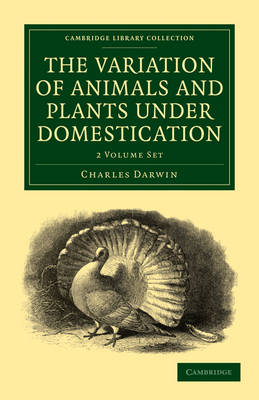Cambridge Library Collection - Darwin, Evolution and Genetics
4 primary works • 23 total works
This book, the second of three-volumes detailing the life of Charles Darwin, published five years after his death, was edited by his son Francis, who was his father's collaborator in experiments in botany and who after his death took on the responsibility of overseeing the publication of his remaining manuscript works and letters. In the preface to the first volume, Francis Darwin explains his editorial principles: 'In choosing letters for publication I have been largely guided by the wish to illustrate my father's personal character. But his life was so essentially one of work, that a history of the man could not be written without following closely the career of the author.' Among the family history, anecdotes and reminiscences of scientific colleagues is a short autobiographical essay which Charles Darwin wrote for his children and grandchildren, rather than for publication. This account of Darwin the man has never been bettered.
The Descent of Man and Selection in Relation to Sex: Volume 2
by Charles Darwin
Published 2 January 2010
In his introduction, Darwin reveals that for many years he had no intention of publishing his notes on this topic, 'as I thought that I should thus only add to the prejudices against my views'. By 1871, he felt that his fellow scientists would show a greater openness of mind to his arguments, even when taken to their logical conclusion and applied to the descent of man from the apes – the aspect of his theory which had been so widely mocked since the notorious question asked by Bishop Wilberforce at the Oxford debate of 1860: was it through his grandmother or his grandfather that Thomas Huxley, Darwin's champion, considered himself descended from a monkey? However, the book's focus on the area of sexual selection and the evolutionary importance of secondary sexual characteristics across the animal kingdom meant that the book was received without the public outrage that Darwin had feared.
The Variation of Animals and Plants under Domestication 2 Volume Paperback Set
by Charles Darwin
Published 3 June 2010
Charles Darwin (1809-1882) first published this work in 1868 in two volumes. The book began as an expansion of the first two chapters of On the Origin of Species: 'Variation under Domestication' and 'Variation under Nature', and it developed into one of his largest works; Darwin referred to it as his 'big book'. Volume 1 deals with the variations introduced into species as a result of domestication through changes in climate, diet, breeding and an absence of predators. In volume 2, concerned with how species inherit particular characteristics, Darwin first published his 'provisional hypothesis' of pangenesis, and challenged the theories of evolution by design. The work is a masterpiece of nineteenth-century scientific investigation; it is a key text in the development of Darwin's own thought and of the wider discipline of evolutionary biology.

